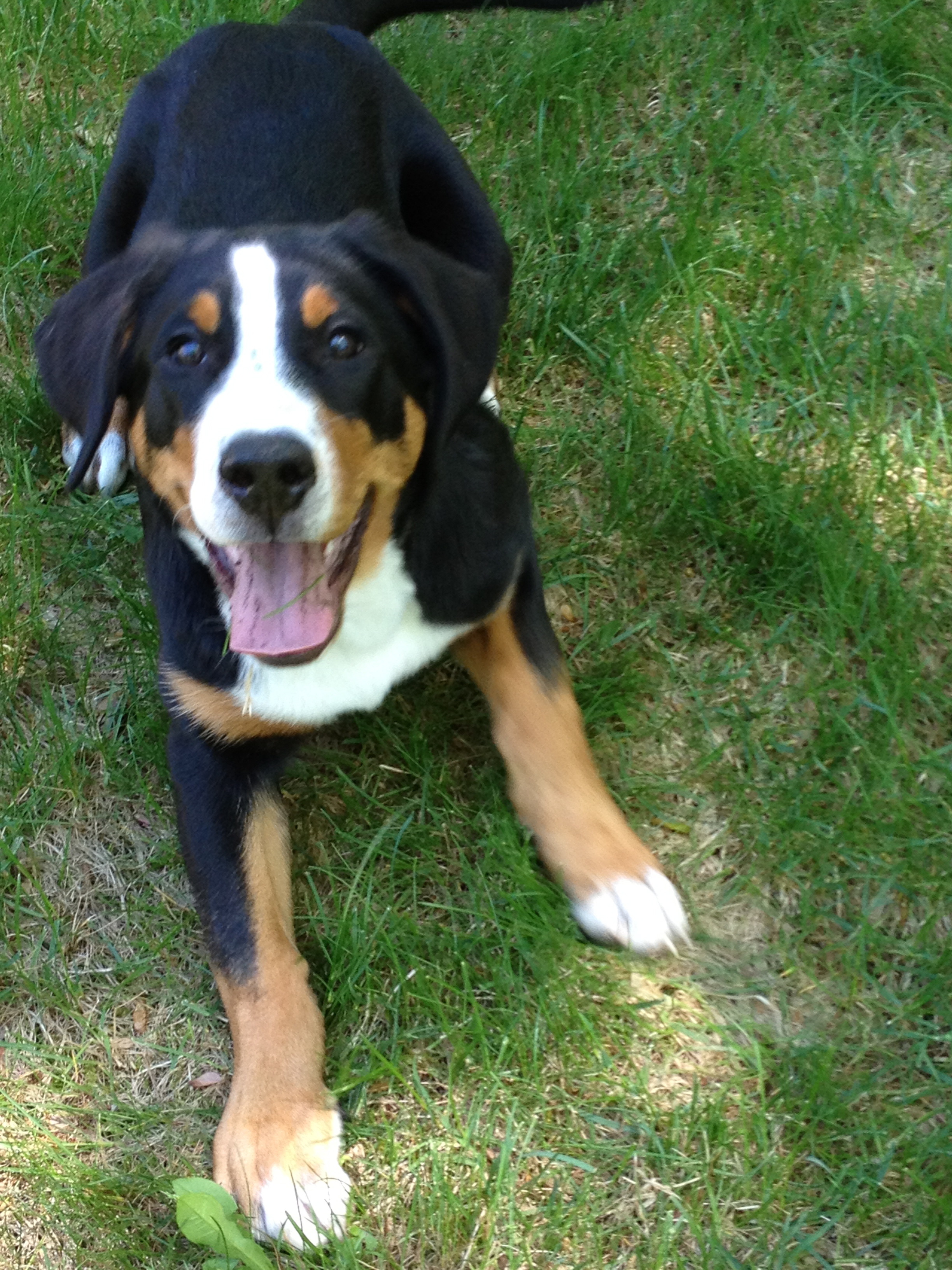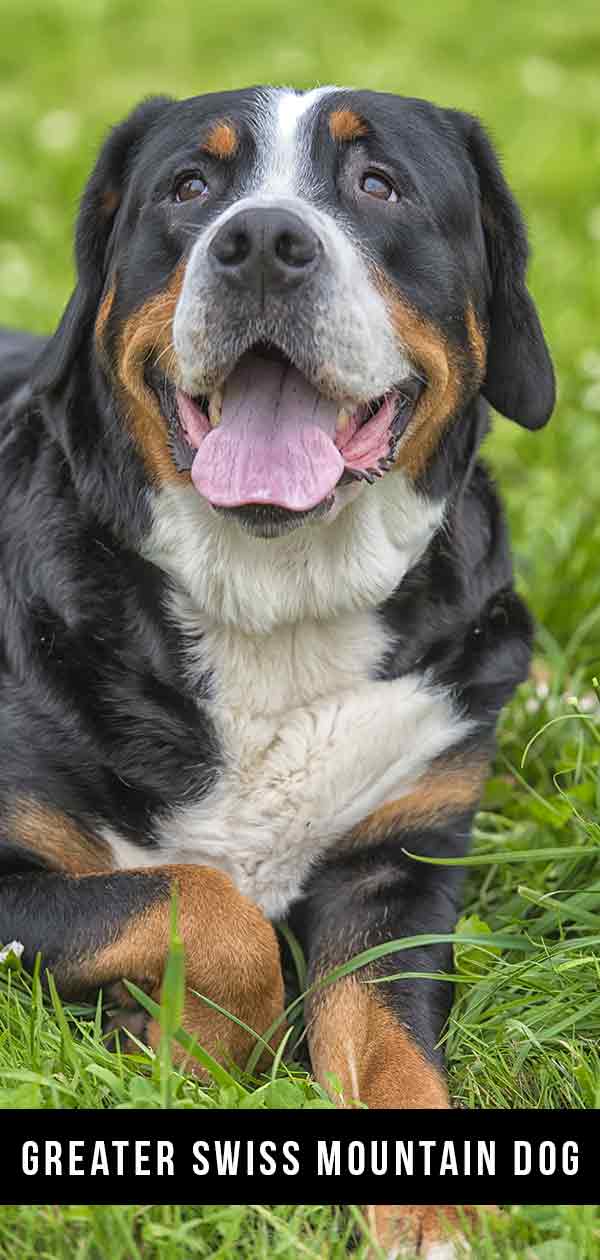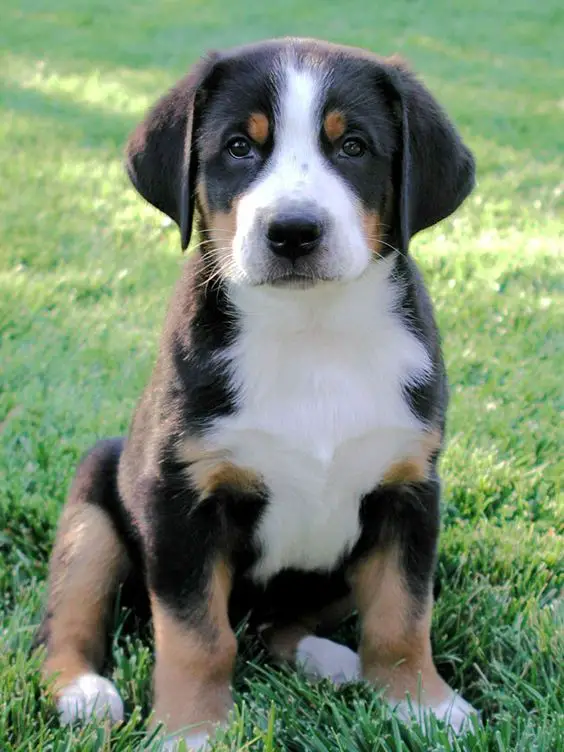Why consider the Greater Swiss Mountain Dog as your next companion? This majestic breed, with its rich history and versatile nature, offers more than just companionship—it embodies strength, loyalty, and a gentle demeanor that makes it an ideal choice for families and individuals alike. A breed steeped in tradition, the Greater Swiss Mountain Dog, or Swissy, stands out not only for its striking tricolor coat but also for its historical role as a working dog in the Swiss Alps.
The Greater Swiss Mountain Dog, often referred to simply as the Swissy, is a robust and gentle giant known for its historical role as a working dog in the Swiss Alps. This breed's versatility extends beyond herding and guarding; they were most utilized on farms for pulling carts, making them indispensable to Swiss farmers. Today, these dogs are cherished for their loving temperament and striking appearance. Despite their size, Swissies are remarkably agile and active, requiring regular exercise and mental stimulation to thrive. Their intelligence and eagerness to please make them relatively easy to train, although patience and consistency are key due to their independent streak.
| Breed Information | Details |
|---|---|
| Breed Name | Greater Swiss Mountain Dog |
| Common Nicknames | Swissy, GSMD |
| Origin | Switzerland |
| Size | Large |
| Coat Color | Tricolor (black, white, and rust) |
| Lifespan | 6-10 years |
| Temperament | Gentle, loyal, intelligent, active |
| Exercise Needs | Moderate to high |
| Health Concerns | Hip dysplasia, bloat, epilepsy |
| Reference | AKC Breed Profile |
When considering the Greater Swiss Mountain Dog, potential owners must be aware of the breed's specific needs and characteristics. While they are generally healthy dogs, certain health issues like hip dysplasia, bloat, and epilepsy can occur. Responsible breeding practices play a crucial role in minimizing these risks. Prospective Swissy owners should seek reputable breeders who prioritize the health and well-being of their dogs through rigorous health screenings and ethical breeding standards.
Epilepsy, a neurological condition characterized by recurrent seizures, is one of the concerns associated with the breed. Even if a dog has had seizures with no known cause, it is essential to address this issue seriously. Breeders may downplay such occurrences, saying things like, well, he had a seizure, but we don't know what caused it. However, transparency and thorough testing are vital when selecting a puppy to ensure long-term health and happiness.
In addition to health considerations, financial preparedness is another critical aspect of owning a Greater Swiss Mountain Dog. The cost of acquiring a Swissy can vary significantly depending on factors such as breeder reputation, location, and lineage. While some may shy away from discussing price, it is an important conversation to have upfront. Potential buyers need to understand that the initial purchase price is just the beginning. Ongoing expenses such as quality food, veterinary care, grooming, and training can add up over time. Being financially prepared ensures that you can provide the best possible life for your new companion.
Comparing the Greater Swiss Mountain Dog with other breeds, such as the Bernese Mountain Dog, highlights both similarities and differences. Both breeds share a common ancestry and similar physical traits, including their tricolor coats and large stature. However, there are distinct differences in temperament, energy levels, and overall health considerations. For instance, while both breeds are known for their calm and friendly nature, the Greater Swiss tends to be more active and boisterous compared to the laid-back Bernese. Understanding these nuances helps prospective owners make informed decisions about which breed aligns best with their lifestyle.
Training a Greater Swiss Mountain Dog requires patience, consistency, and positive reinforcement. These intelligent dogs respond well to reward-based methods, making obedience training a rewarding experience for both owner and dog. Early socialization is also crucial, as it helps them develop into well-rounded adults who are comfortable in various environments. Due to their size and strength, proper training ensures that they remain manageable and safe around people, especially children.
Despite their imposing size, Greater Swiss Mountain Dogs are surprisingly adaptable to different living situations. Whether you reside in a spacious home with a yard or an apartment in the city, a Swissy can thrive provided they receive adequate exercise and mental stimulation. Daily walks, playtime, and interactive toys keep them engaged and prevent boredom-related behaviors. Additionally, their thick double coat equips them well for colder climates, though they can adapt to warmer regions with appropriate care.
For those contemplating the adoption of a Greater Swiss Mountain Dog, understanding their unique qualities is paramount. From their historical roots as working dogs in the Swiss Alps to their modern-day role as beloved family pets, Swissies continue to captivate hearts worldwide. Their combination of strength, loyalty, and gentleness makes them exceptional companions for those willing to invest time and effort into their care and development.
Ultimately, the decision to bring a Greater Swiss Mountain Dog into your life should not be taken lightly. It involves a commitment to meeting their physical, emotional, and financial needs throughout their lifespan. By doing so, you open yourself up to a world of joy, love, and unforgettable experiences with one of the most remarkable breeds in existence.
| Breed Comparison | Greater Swiss Mountain Dog | Bernese Mountain Dog |
|---|---|---|
| Size | Large | Large |
| Activity Level | High | Moderate |
| Temperament | Gentle, loyal, active | Calm, affectionate, laid-back |
| Coat Type | Thick double coat | Thick double coat |
| Lifespan | 6-10 years | 7-10 years |
| Health Concerns | Hip dysplasia, bloat, epilepsy | Hip dysplasia, cancer, arthritis |



